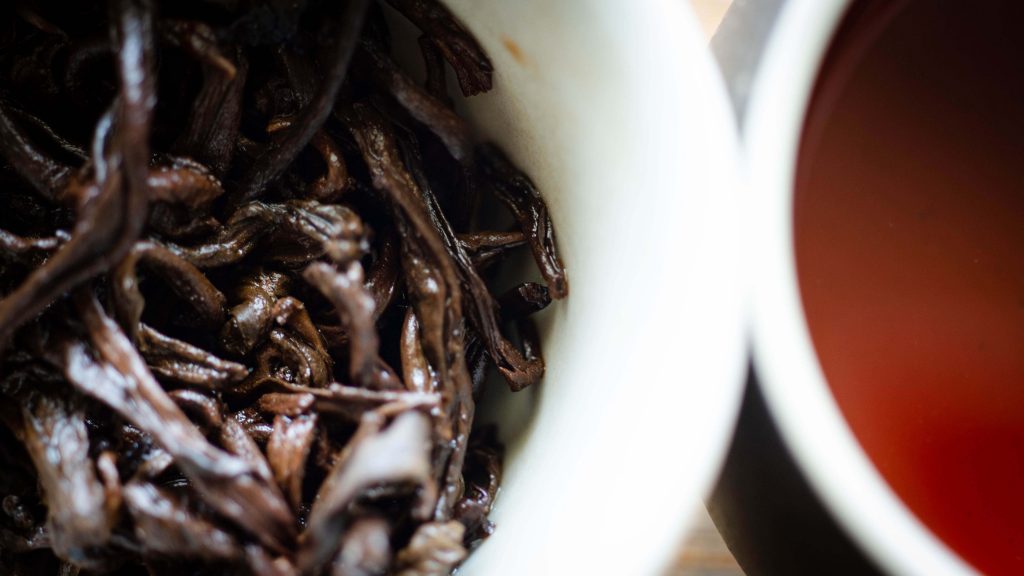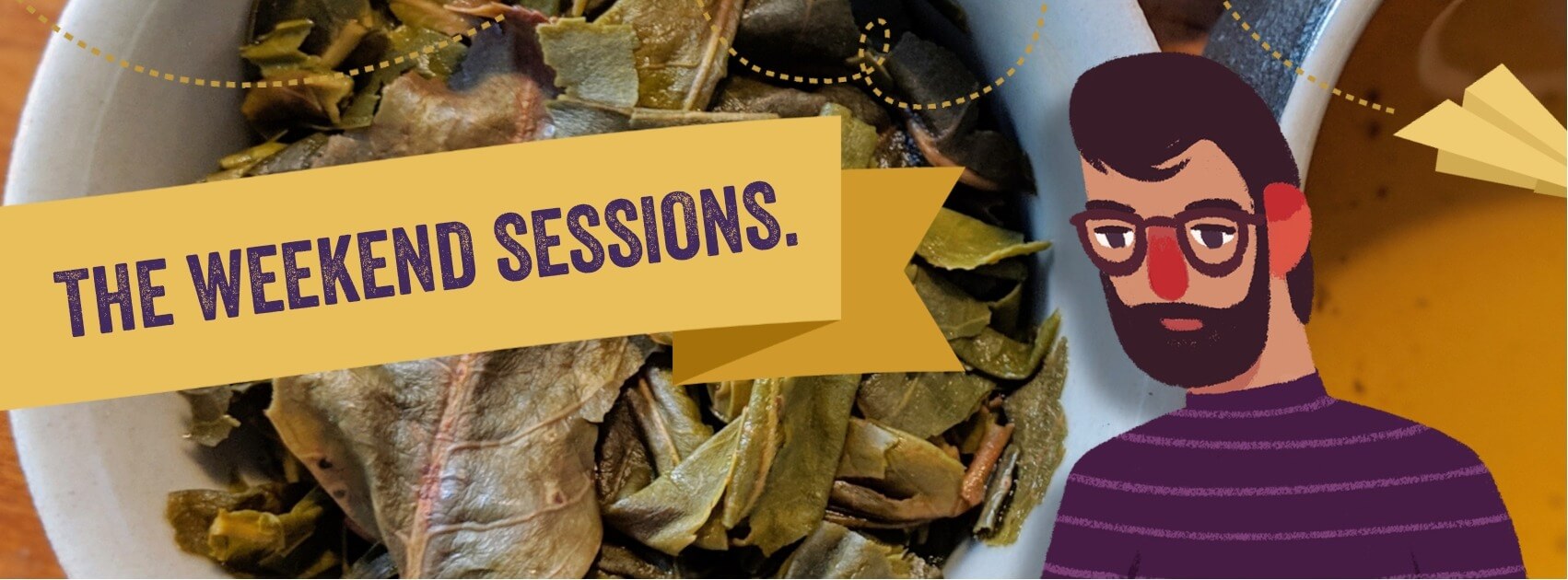The time has come for my final tasting of the three one-of-a-kind shou puerhs – Crimson Lotus Tea‘s 2018 Spring Lao Man’E Gushu Shou Puerh. Lao Man’E is a new region for me and one I’ll be exploring a bit over the next few months, but starting out with a shou from there should be interesting. Sheng from Lao Man’E is known for being quite bitter, and I’m interested to see how this translates over to a shou. Like the Lao Ban Zhang that I reviewed last weekend, this tea is made from the second harvest of leaves to keep the price from being too over the top.
Initial Impressions
As I’ve noted before, dry shou all pretty well smells the same to me, and this is no exception. Opening the sample back up and giving a whiff tells me that it’s shou. Maybe it is a little bit sweeter smelling than I expected, but that’s about all I think I can comment on. After one rinse, these leaves take on a unique smell that I haven’t gotten much from ripe puerhs before. It’s earthy smelling with a clear shiitake mushroom aroma, but there is also a strong fruitiness that reminds me of a sheng. It’s not quite plum, but it’s definitely in that area. The liquor from the rinse is darker than I’ve seen it so early on before, bordering on black.
For this session I am using 4 grams of leaves in my 55ml gaiwan, water just off a boil, and one rinse followed by a five second infusion and steepings that increase by five seconds each time.

Infusions 1-3
The first sip of Crimson Lotus’ Lao Man’E shou puerh is over the top chocolate malty with a background of currants and delicious wood rot. If you have never had ripe puerh before and the term “delicious wood rot” puts you off, then I’d probably recommend starting somewhere else because it’s strong in this one. Both the second and third infusion stay in line with the previous notes, but everything gets bigger and more full. There is a bitterness that starts out light and grows through each infusion, and it gains a bit of bright top end slowly over these early infusions. The bitter taste is an interesting one and I was trying to pin it down for the first two infusions, but it becomes clear in the third steeping. It’s a fruity sort of bitterness that reminds me of apple seeds, plum skin, or the skin of almonds. Surprisingly to me, the bitterness isn’t insane. It’s present but not nearly as overpowering as I was expecting, and I think less than the Lao Ban Zhang.

Infusions 4-6
The taste isn’t wavering at all – nothing new, and nothing taken away. The taste does continue to get stronger though, and even when you think it’s peaked it still finds a way to get more powerful The only real change comes in the sixth infusion, which sees a drop off in bitterness and an increase in a sugary sweetness.
Note about the above photo – I always take a photo at the 3rd infusion and the 6th, and in more or less the same framing so that you can compare the looks of the liquor and the leaves. Unfortunately I got caught up in my tea drinking and forgot to snap a photo here, so this photo was taken around infusion 9 or so when I suddenly remembered. So, if you think the liquor is looking a bit thin and watery here you’re absolutely right – it was still a pleasing inky black colour

Infusions 8-12
The lack of bitterness has made way for some new flavours to move in and take over. The remainder of this session is overwhelmingly fruity and sweet. The fruit notes are mainly plum, raisin and currants, and the sweetness is similar to brown sugar. In the background there are light forest floor, shou-y notes, but the tail end of this session has more in common with sheng than shou to me. Flavour drops off very quickly between the tenth and twelfth infusions, where I ended the session.
Final Thoughts
Like the Lao Ban Zhang, this isn’t my favourite shou but it’s through and through an interesting session and the taste really is unlike anything else I have had. This isn’t something that I would drink constantly if I had more of it, but I am so happy I got to try it and really look forward to sharing the rest of it with somebody.

